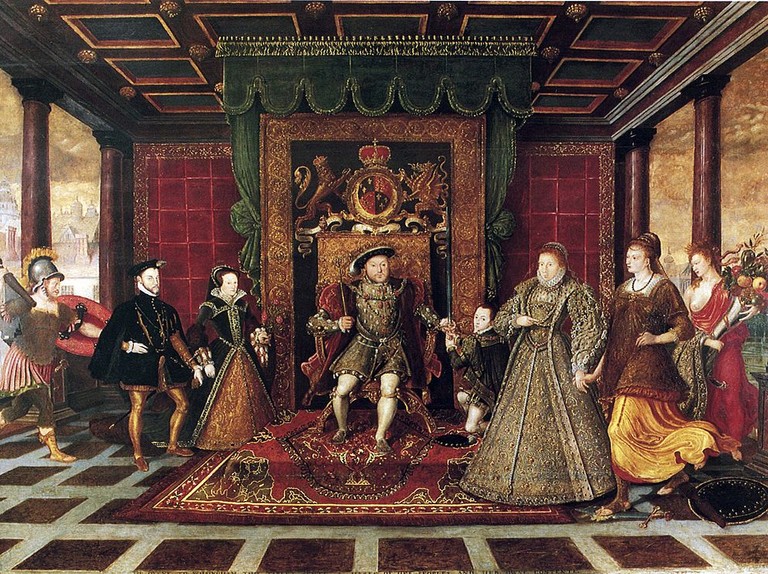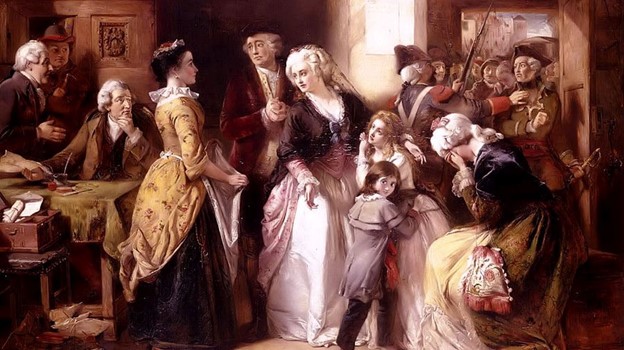HENRY VIII
– died in 1547, in London
– last wish – to be buried with Jane Seymour, one of his wives who kept her head
The will of Henry VIII, the second king of the Tudor dynasty, one of the most powerful monarchs in England, was written on December 30, 1546, less than a month before his death. At that time, Henry was emitting heavy odors due to painful and suppurating ulcers, perhaps even syphilitic, that had to be bandaged several times a day.
Due to a chronic dropsy (a condition now called edema), the king’s legs were like an elephant’s, and his body was overweight, weighing over 180 kilograms. Irritable, immobilized in bed, breathing hard, he understood that his end was near and he dictated a long will, of almost seven thousand words.
Although Henry had separated from the church in Rome, he had remained a Roman Catholic in most of his beliefs. His will began with a pious preamble, in which he declared himself an exemplary Christian, and in the event that his soul was destined for a stop in purgatory (in his opinion, he had nothing to look for in hell!), He ordered a series of requiems. in his memory to shorten his stay.
With a monstrous selfishness, he did not consider himself condemnable for the execution of England’s most important humanists and intellectuals and saw no sin in the gesture that had joined two of his six wives on the long list of those who had put their heads on the stump for fabricated charges of treason.
Towards the end, he had become a shook, pathetic man who complained that life had cursed such a benevolent soul as his with countless misfortunes — chiefly chronic ailments and wives who suffered spontaneous abortions. As expected, he never considered the possibility that his wife’s disastrous pregnancies were the result of his alleged syphilis.
Evidence of the existence of this venereal disease is circumstantial:
- His first wife, Catherine of Aragon, gave birth to a dead daughter and a son who survived only seven weeks. Then she had four more pregnancies, failing to complete any of them; she humiliated him with a second son born dead, and finally gave him only one surviving heir, a daughter named Mary, who would rule England under the name of Mary Tudor or Bloody Mary.
- Henry’s second wife, Anne Boleyn, lost her first pregnancy at four months, but she also gave birth to an illegitimate daughter, Elizabeth, who would rule England for 45 years.
- After ordering Anne’s beheading on dubious charges of adultery, Henry married Jane Seymour, who offered him a son and heir, Edward; but she died nine days later, probably from puerperal fever or childbed fever. Although Edward came to rule England for six years, he was ill, suffering from chronic inflammation of the skin and a mysterious condition that caused his fingertips to come off his hands and feet.
- Widowed for three years, Henry eventually accepted a politically motivated marriage, but without seeing his bride before the wedding. When he first saw his fiancée Anne de Cleves, he ordered that Thomas Cromwell, the statesman responsible for arranging the marriage, be beheaded. The marriage, not consummated, was dissolved after a few months. At least she had been spared spontaneous abortions and sick offspring.
- His fifth wife, the young and wanton Catherine Howard, was beheaded for infidelity before she became pregnant.
- When he married his sixth wife, Catherine Parr, in 1543, the monarch had become ill and obese. By exempting her from sexual intercourse, he may have spared her a syphilitic conception.
Biohistorians believe that Henry may have contracted syphilis when he was young and that the disease was chronic and active, infecting at least some of his wives, especially Catherine of Aragon. The Danish doctor Ove Brich lists 13 medical reasons that support his opinion that Henry was chronically contagious.
In addition to evidence of miscarriages, Brinch lists: a skin disease that the king suffered from when he was 22 years old; a series of acute migraines that began at the age of 37; leg ulcers, which did not heal; an acquired deformation of the right side of the nose, which could have been a syphilitic gonad, a tumor with a rubber-like consistency; plus seizures and violent outbursts of anger.
Henry VIII states in his will that the burial of his “corpse” take place with royal pomp at “Windsor College.” He also demands that the bones of “our faithful and loving wife, Queen Jane, be joined”. Historians interpret the king’s desire to be reunited with Jane Seymour as proof that she was his favorite wife.
After leaving a significant portion of his enormous wealth to charity, he tackles the issue of succession, complicated by his many marriages. He orders his successors to be the sick Eduard, Jane Seymour’s son, and Eduard’s children; then, Maria Tudor and her heirs; and finally, the bastard Elisabeth, daughter of Anne Boleyn. Through illness, death, and intrigue, Edward, Mary, and Elizabeth succeeded on the throne of England.





